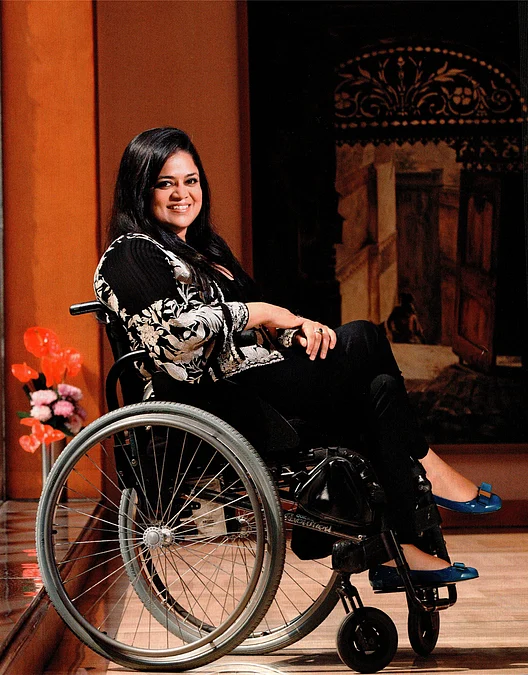Copyright ibtimes

The smartwatch market continues to evolve rapidly, building on the impressive innovations seen in 2025. As more consumers look to integrate wearable technology into their lifestyles, selecting the right smartwatch becomes increasingly important, balancing features, compatibility, design, and price. This guide provides a comprehensive overview of what to look for when purchasing a smartwatch in 2026, drawing on the best smartwatch features and advice on choosing a smartwatch tailored to individual needs. It also incorporates insights relevant to those searching for a "smartwatch buying guide 2025" to ensure they remain up to date. What Are the Best Smartwatch Features to Look For in 2026? Health and Fitness Tracking: Leading smartwatches now include advanced sensors for heart rate monitoring, blood oxygen (SpO2) measurement, sleep tracking, and exercise recognition across numerous activity modes. The latest models add sleep apnea detection and AI-enhanced health insights, providing a more holistic view of wellness. Display Quality and Design: Expect bright AMOLED or OLED screens with LTPO technology, offering excellent readability from all angles and always-on display options. Designs have slimmed down with lighter materials, and screen protection technologies such as sapphire crystal or Gorilla Glass are common. Battery Life and Charging: While most flagship smartwatches offer about 18–48 hours of battery life, 2026 models emphasize improved efficiency and faster charging, with some reaching 80% charge in under 30 minutes. Smart Connectivity Features: Receiving notifications, answering calls, built-in voice assistants, NFC payments, and GPS remain essential. Newer iterations offer improved voice isolation during calls and expanded app ecosystems for convenience. Compatibility with Smartphones: Compatibility varies primarily between iOS and Android. For example, Apple Watch Series 10 and 11 offer optimal performance with iPhones, while Samsung Galaxy Watch 8 and Google Pixel Watch excel on Android devices. Additional Safety Sensors: Features such as fall detection, crash detection, and emergency SOS functionality are becoming widespread, enhancing device utility and user safety. How to Choose a Smartwatch Based on Your Lifestyle Fitness Enthusiasts: Prioritize watches with comprehensive health metrics, accurate GPS, long battery life, and extensive workout modes. Garmin and Fitbit models are well-regarded in this category. Everyday Users: Focus on smart notifications, call handling, and battery life. Apple Watch and Samsung Galaxy Watch offer seamless integration and ease of use. Outdoor Adventurers: Durability, water resistance (up to 50 meters or more), and reliable GPS tracking are critical. Look for MIL-STD-810 G certifications and robust construction materials. Fashion-Conscious Buyers: The look, customizable watch faces, and comfort are paramount. Watches with interchangeable bands and premium materials suit style-driven users. What Smartphone Compatibility Should You Consider? Choosing a smartwatch should take into account your smartphone ecosystem. Apple Watches work best with iPhones thanks to exclusive features, while Samsung and Google watches offer broader compatibility with Android devices. Cross-platform use is possible, but often with limited functionalities. Understanding these compatibilities is vital for an integrated user experience. How Important Is Battery Life and Charging? Battery life remains a significant consideration. Despite technological advancements, most smartwatches require daily or every-other-day charging. Fast charging technology alleviates this inconvenience, with some watches charging up to 80% within 30 minutes. Power-saving modes can extend battery life but may limit some features. What Are the Price Ranges and How to Get the Best Value? Smartwatches span from budget-friendly (under $150) to premium models ($400 and above). Budget devices often cover basic notifications, fitness tracking, and a simple design. Mid-range options bring advanced health metrics and better screens, while premium devices offer top-tier performance, premium materials, and exclusive features. Assessing priorities helps buyers choose the best value within their budget. What Are Common Smartwatch Brands and Their Strengths? 1. Apple Watch Series 10/11: Best for iPhone users, with a polished interface, extensive app selection, and comprehensive health features. 2. Samsung Galaxy Watch 8: Leading choice for Android users, integrates Google Gemini AI assistant, excellent health suite, and stylish design. 3. Garmin: Best for fitness and outdoor activities with superior GPS and long battery life. 4. Fitbit: Offers detailed health metrics and user-friendly interfaces, suitable for casual fitness tracking. 5. Google Pixel Watch: Combines Wear OS with Fitbit health tracking, presents a balance of style and function. How to Assess the Build Quality and Durability of a Smartwatch? Materials such as aluminum, stainless steel, and titanium are common, with premium models opting for the latter two for increased durability. Water resistance ratings (IP68, 5ATM) ensure protection against sweat and water immersion. Screen protection varies, with sapphire glass being the most scratch-resistant option. Some watches also meet military-grade standards for shock and dust resistance, appealing to rugged users. How Do Smartwatches Protect Your Data and Privacy? Modern smartwatches feature encrypted data transfer, biometric security such as passcodes or biometric authentication, and app permission controls to safeguard user privacy. Buyers should research each device's security protocols, especially for health data, to ensure compliance with privacy standards. Selecting the right smartwatch in 2026 entails analyzing the best smartwatch features relevant to your needs, understanding device compatibility, balancing battery life with usability, and considering price versus value. Whether for fitness, fashion, or everyday convenience, buyers can follow this comprehensive smartwatch buying guide to make informed, tailored decisions that enhance their digital lifestyle. This guide aims to support consumers in confidently choosing a smartwatch and staying abreast of the latest advancements in wearable technology. Frequently Asked Questions 1. How long do smartwatches typically receive software updates? Most modern smartwatches receive software support and updates for about three to five years after their release. For example, Samsung Galaxy Watches generally get four years of Wear OS upgrades and five years of security patches. Google Pixel Watches offer at least three years of updates. Apple Watch models typically receive around 5 years of updates, slightly shorter than those of their iPhone counterparts. After this period, support usually ends, which may impact app compatibility and security. 2. Can software updates add new features to older smartwatches? Yes, software updates often bring new functionalities, improve performance, and enhance security for existing smartwatches. Major OS upgrades can introduce redesigned user interfaces, improved battery management, and expanded app ecosystems. However, the extent of new features depends on the device's hardware capabilities; older watches may receive fewer enhancements over time. 3. How important is repairability when choosing a smartwatch? Repairability is gaining importance as users keep smartwatches longer. Premium models from brands like Samsung and Apple offer official repair programs, making it more economical to fix devices rather than replace them. Durable materials such as titanium and sapphire glass contribute to longevity, but considering repair options can reduce electronic waste and extend your smartwatch's lifespan. 4. Are there smartwatches that support diabetes management? Certain smartwatches, especially those with health-focused features, are beginning to integrate with continuous glucose monitoring systems such as the DexCom G6 for diabetes management. While not all models currently support this, it is a growing trend, and buyers interested in health monitoring should research compatibility with medical devices or apps for their specific needs. Originally published on Tech Times



